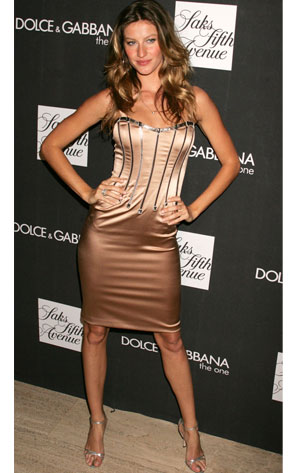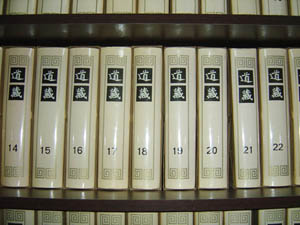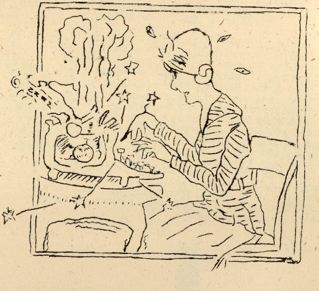Fearless or Nothing to Lose?
/ Self-defense, narrowly defined, is the ability to hurt someone quickly and get away. How someone carries themselves, how we are perceived by others, is not generally considered part of self-defense, but it should be the main subject. Usually this aspect of ourselves is unconscious and people will resist paying attention to it. Taking stock of how we carry ourselves can be life transforming.
Self-defense, narrowly defined, is the ability to hurt someone quickly and get away. How someone carries themselves, how we are perceived by others, is not generally considered part of self-defense, but it should be the main subject. Usually this aspect of ourselves is unconscious and people will resist paying attention to it. Taking stock of how we carry ourselves can be life transforming.All of us have known people who manage to get in fights on a semi-regular basis and seem oblivious of the possibility that the way they carry themselves, or the way they smile or use their eyes, may in fact be provoking these fights. And we've also all known people who just act like victims, and because of that, such people often end up making life choices that shield them from contact with potencial perpetrators.
Both of these behaviors are true for all of us. To at least some tiny degree, we all at times slip into victim, challenger, and perpetrator roles.
There are some theatrical and real life extremes which are worth
 considering. Gilligan, of Gilligan's Island fame, is a character which was adapted from Comedia dell'arte. One of Gilligan's qualities is that he never gets hurt, he is plastic. His clothes don't fit, he slumps, he flops, he swings, and he is always over stepping the Captain's personal space and getting whacked. He is a great protagonist because he can innocently go anywhere, do anything, get in a whole mess-o-trouble--and yet he maintains this, "I'm not worth it" stance. His physicality tells us that he is just too weak, too
considering. Gilligan, of Gilligan's Island fame, is a character which was adapted from Comedia dell'arte. One of Gilligan's qualities is that he never gets hurt, he is plastic. His clothes don't fit, he slumps, he flops, he swings, and he is always over stepping the Captain's personal space and getting whacked. He is a great protagonist because he can innocently go anywhere, do anything, get in a whole mess-o-trouble--and yet he maintains this, "I'm not worth it" stance. His physicality tells us that he is just too weak, too accidental, to bother holding accountable--he is just not worth biting, boiling, or beheading. As he trips over the most important prop in the scene and lands face down in the lap of danger, he says, "Just pretend you don't see me, I'm not really here, heee, hee, heee."
accidental, to bother holding accountable--he is just not worth biting, boiling, or beheading. As he trips over the most important prop in the scene and lands face down in the lap of danger, he says, "Just pretend you don't see me, I'm not really here, heee, hee, heee."Now compare that to a model on a catwalk. "Pffff, if I need to describe it for you...YOU obviously aren't in the know...is this like, the first blog you've ever read???"
O.K. most models don't even think WE are worth talking to, but that's what they would say if they stooped down to our level. The model flaunts her vulnerability with high heals, a tight skirt, and a long bare neck. The model is provoking us to attack, like an alpha wolf sticking out its neck. We don't dare bite.
Like our untouchable model, the male alpha wolf dares by jutting out its neck, "Go ahead, hit me, I've got nothing to lose, how much damage could you possibly do? You're going to be reeeeally sorry, but heck, its your call, throw the first punch." Dirty Harry did this with the line, "Go ahead, make my day."
The physicality of the vulnerable wolf and the physicality of a bumbling Gilligan can both be used to get out of a fight.
In the old days when you captured someone, stripping them naked was a way to make it difficult for them to run away. With the invention of prisons and work camps and some forms of slavery,
 hobbling a person with chains, which restricted the length of a person's stride, became a common way to keep people from running away. But with the advent of guns, chains became less important. I'm not sure where the idea originated, but the Russian Gulags, as early as 1920, gave every person a pair of pants that was too big for them. With no belt, if you wanted to run you had to do it naked or with one hand holding up your pants. This also made it really difficult to fight because if you let go of your pants to take a swing at someone, your pants would fall down.
hobbling a person with chains, which restricted the length of a person's stride, became a common way to keep people from running away. But with the advent of guns, chains became less important. I'm not sure where the idea originated, but the Russian Gulags, as early as 1920, gave every person a pair of pants that was too big for them. With no belt, if you wanted to run you had to do it naked or with one hand holding up your pants. This also made it really difficult to fight because if you let go of your pants to take a swing at someone, your pants would fall down.Since that time prisons everywhere have adopted the over-sized pants techniques. American prisons are no exception, prisoners here wear baggy Levi's with no belt.
And thus the fashion of sagging was born! At first, we knew a person had just escaped or been released from prison if they were wearing Levi's half falling off their ass. We knew such people were probably dangerious. But then it became a fashion thing. Pre-teens started doing it to imitate their dangerious uncles. What a mess.

From a fighting point of view, having your pants hanging halfway down your ass is just stupid. Sadly, the two worst prejudices against black men are that they are dangerious and stupid. Sagging perpetuates both prejudices. Since this is obvious to everyone, we have to ask, why do they do it?
The central deity of religious Daoism is the god of fate and the North Star, after which I've named my school. The actual god which sits in this central position at the North Star has actually changed several times in Chinese history. The current deity is called Zhenwu (the perfected warrior) or sometimes Ziwei, or Xuande. Before Zhenwu sat on the throne, it was occupied by the Jade Emperor, before that it was Laojun (the source of the Laozi), and before that it may have been Xiguanmu (the Queen Mother of the West).
But our interest lays in Zhenwu before he got promoted to the throne at the beginning of the Ming Dynasty (1368 CE). Zhenwu, the Perfected Warrior, wasn't always perfected. Before he was perfected, he was just Fearless. At that time he was depicted with wild hair and barefeet. Now-a-days if you see someone with wild hair you think, "Homeless dude," but in those days it meant something different. It meant you were a crazy shaman warrior who answered to no lord. It meant you were so far out of conventional thinking or morality that you were beyond nobility, rank, or status. You were fearless because you had no attachments, no loyalties, nothing to lose. Zhenwu in those times was also depicted with a straight sword in his hand and no scabbard. His sword was always out. In fact he usually dragged the tip of his sword behind him on the ground as if to say, I'm so dangerious I don't even care about keeping my sword sharp. "You wanna test me...bring it on?"
In my experience, when I do my Zhenwu routine in front of a couple of isolated young guys with sagging pants, they usually start doing their Gilligan routine pretty fast. But if they are being watched by other people from their neighborhood, they'll jut out their neck and say, "Shoo...you wanna start something?"
I see sagging as an attempt to project an image of fearlessness. It communicates, "Look! I have nothing, no loyalties, no morality, nothing to lose. If you are seeking status or power or even a quick buck, I'm not worth attacking! I may look vulnerable with my pants hanging down, but if you do attack me, I will fight you fearlessly to the death."
If I felt trapped in a dangerious place, where the people around me were seeking power through direct violence and intimidation, I have to admit, sagging might be a good strategy.
As cults go, I find the cult of sagging pretty horrible, but perhaps in the next era we will promote these deities to a higher court.





 Musicians must learn to distinguish between jing and qi.
Musicians must learn to distinguish between jing and qi. When I'm typing, I'm not thinking about the keys I'm hitting, and I'm not thinking about the words I'm spelling, I am thinking about what I want to say. I am thinking about the sentiment I want to convey, the style, the flavor, and the rhythm.
When I'm typing, I'm not thinking about the keys I'm hitting, and I'm not thinking about the words I'm spelling, I am thinking about what I want to say. I am thinking about the sentiment I want to convey, the style, the flavor, and the rhythm.
 Taijiquan is often said to be the combination of the movements of a crane and the movements of a snake. I haven't had a lot of time to observe cranes but there are some
Taijiquan is often said to be the combination of the movements of a crane and the movements of a snake. I haven't had a lot of time to observe cranes but there are some 

 You can't really be a "modern" person and not ask the questions with regard to pre-20th century ideas, "What should I keep and what should I discard?" "What can I use, and what will just hold me back?"
You can't really be a "modern" person and not ask the questions with regard to pre-20th century ideas, "What should I keep and what should I discard?" "What can I use, and what will just hold me back?" Is push-hands a fight to the death or an intimate bonding experience where you try to get your partner to blush?
Is push-hands a fight to the death or an intimate bonding experience where you try to get your partner to blush?